History
Designed and built by Dr. Alan Abrey in an old quarry site, the Umgeni River Bird Park was opened in April 1984. The park was owned privately by a group of bird lovers who wanted to educate others about birds from around the world. [1] It was run by Alan Abrey until his retirement in 1997, and in those years the artwork for the park (guidebook illustrations, park maps, and so forth) were done by his daughter Robyn Abrey. [2]
Floods in 1987 washed away the road in front of the park, and resulted in the temporary evacuation of the birds to Abrey's home on higher ground. By 1989, the park was home to over 4,500 birds of 400 different species, and was given the “Premier Durban Attraction” award by the Durban Tourism Board. [1]
Construction of the Free Flight Bird Show arena was started in 1995, with the venue staging its first show in 1996. [1]
The park was purchased by Tsogo Sun in 1997, with the new owners agreeing to uphold the park's "Inspire to Conserve" philosophy. [1]
Tsogo Sun closed the park at the end of August 2009 because it was not financially viable. [3] The Regency Foundation Network agreed to raise the R4.5 million necessary for the purchase, and the City took over the R3 million per year operating expenses. [4] The Park was reopened in June 2010. [5] [6]
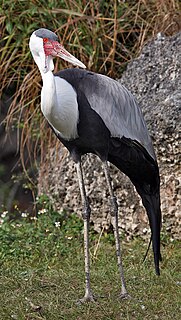
The wattled crane is a large bird found in Africa, south of the Sahara Desert. It is sometimes placed in the monotypic genus Bugeranus.

The Mesker Park Zoo and Botanic Garden is a zoo that opened in 1928 in Evansville, Indiana, United States. It is located in Mesker Park on Evansville's northwest side and is run by the City of Evansville.

The Calgary Zoo is located in Bridgeland, Calgary, Alberta, Canada, just east of the city's downtown and adjacent to the Inglewood and East Village neighborhoods. It is accessible via Calgary's C-Train light rail system, by car via Memorial Drive, and by bicycle and footpath via the Bow River pathway. A large portion of the zoo is located on St. George's Island in the Bow River.
The Franklin Park Zoo is a 72 acres (290,000 m2) zoo located in Boston, Massachusetts. It is currently operated by Zoo New England, which also operates the Stone Zoo in Stoneham, Massachusetts. The zoo is located in the northeast portion of Franklin Park, Boston's largest park and the last component of the city's famed Emerald Necklace.
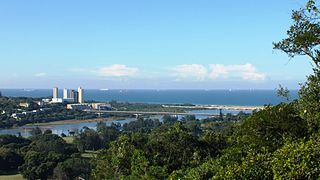
The Umgeni River or Mgeni River is a river in KwaZulu-Natal, South Africa. It rises in the "Dargle" in the KZN Midlands, and its mouth is at Durban, some distance north of Durban's natural harbour. The name is taken to mean "the river of entrance" in Zulu, though other meanings have been proposed.
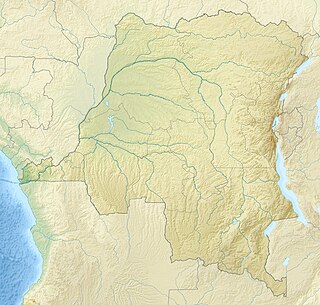
Upemba National Park is a large national park in Haut-Lomami, Lualaba Province & Haut-Katanga Province of the southeastern Democratic Republic of Congo, formerly Zaire.

The National Aviary, located in Pittsburgh, Pennsylvania, is the only independent indoor nonprofit aviary in the United States. It is also the country's largest aviary, and the only one accorded honorary "National" status by the United States Congress.

Durban North is an area to the north of Durban in the eThekwini Metropolitan Municipality, KwaZulu-Natal, South Africa. Durban North lies between the N2 freeway and the eastern seashore, with the Umgeni River forming its southern boundary. It has residential suburbs that are some of Durban's most affluent and is flanked by La Lucia in the north.
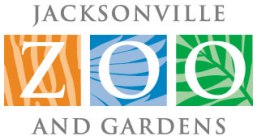
The Jacksonville Zoo and Gardens, located in Jacksonville, Florida, sits at the mouth of the Trout River, near where it flows into the St. Johns River. The zoo occupies approximately 122 acres (49 ha) and has over 2,000 animals and 1,000 plant species in its collection. The zoo has grown from its modest beginnings in Springfield to be considered one of the city's premier attractions, with more than one million visits annually.

The Umgeni Steam Railway is a 3 ft 6 in gauge heritage railway at Inchanga, near Durban. The Durban to Pietermaritzburg line was built in the 1880s; it runs through a 53 metres (174 ft) long tunnel at Drummond built in 1878, which is probably the oldest tunnel in use today in South Africa

Verloren Valei Nature Reserve is a protected area in Mpumalanga, South Africa. One of the few places in the country to breed the three species cranes present in South Africa, the Verloren Vallei Nature Reserve lies roughly 13 km (8.1 mi) outside Dullstroom, a beautiful, peaceful part of the Steenkampsberg plateau that includes rolling grasslands and sensitive wetlands.
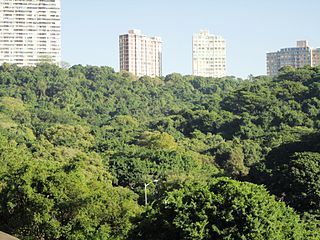
Burman Bush is a nature reserve in Morningside, Durban, situated some 8 km north of the CBD. At about 50 hectares it constitutes a small circular enclave of coastal forest which forms part of the Durban Municipal Open Space System (D'MOSS). It is the northern remnant of a forest that once covered much of the Berea ridge. The reserve's elevation varies from 19 to 133 m a.s.l.

Pigeon Valley is a Natural Heritage Park and formally declared municipal nature reserve in Durban, South Africa. It is an unusual example of an urban reserve with very high levels of biodiversity. It was established to provide protection for the Natal elm and other forest giants of the coastal climax forest. Another rare tree that occurs here is Natal forest loquat, which is endemic to the Durban area and to oNgoye Forest. Pigeon Valley is about 11 ha in extent, and is situated on the Berea, overlooking Durban Bay. Its unusual north-south orientation may contribute to the biodiversity, with the south-facing slope covered in canopy forest, while the north-facing slope has thorny thickets. An adjoining reservoir, previously part of the reserve, provides a patch of coastal grassland.

Mitchell Park Zoo is also known as Mitchell Park or Mitchell's Park. Situated in the Morningside suburb of Durban, South Africa, it is the only zoo in Durban.

The Natal Railway Company was formed in January 1859 for the construction of a 3 kilometres (1.9 mi) railway in Durban.

Beachwood Mangroves Nature Reserve is located at the mouth of the Umgeni River in Durban North, a suburb of Durban, South Africa. The nature reserve, proclaimed in 1977, protects 76 hectares of a natural estuarine system.

Umgeni Park is a residential area in northern Durban, KwaZulu-Natal, South Africa. Together with its neighbouring Durban North suburb of Athlone, the area is also known as Riverside, due to its location along the northern banks of the Umgeni River. The area is marked by its cluster developments and townhouse complexes, as well as free standing homes. On the western boundary of the suburb is the Briardene Informal Settlement and the Umgeni Park light industrial area.
The uMgeni Vlei Nature Reserve in KwaZulu-Natal, South Africa protects several threatened bird species.

Silverglen Nature Reserve is a 460 hectare conservancy on the Umlaas River located aside the suburb of Silverglen, Chatsworth, KwaZulu-Natal in South Africa. The reserve is the largest piece of coastal grassland and bush clump mosaic in Greater Durban, and is home to the first medicinal plant nursery in Africa, established in 1986.

















